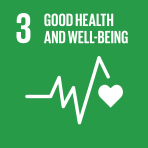Abstract
This paper is produced alongside Innocenti Report Card 7 Child Well-being in Rich Countries. It provides more detail on how the indicators were chosen for the Report Card, and how they were combined into components and then into dimensions. It also provides additional analysis to complement the Report Card. We started working on this topic in reaction to the cautious approach to indicator development of the Indicators Sub Committee of the European Union Social Protection Committee. The so-called Laeken Primary and Secondary Indicators are not well adjusted to capture children’s well-being and currently only contain child breakdowns for a relative poverty measure and jobless households. Although in the report by Professor Tony Atkinson and colleagues prepared for the Luxembourg Presidency (Atkinson et al., 2005) there was a proposal that children should be ‘mainstreamed’, it was suggested (by the Head of Eurostat) that only one child-related indicator should be added to the Laeken Primary Indicators – on educational achievement. Our aspiration was to demonstrate that much more was possible using already available data. So during the UK Presidency of the EU we set about building an index of child well-being that will be published in Social Indicators Research (Bradshaw, Hoelscher and Richardson, 2006). The EU index is different to the analysis developed in this paper mainly because it exploits European data sources not available for OECD countries. This paper begins in Section 1 with a background review of previous conceptualisations of child wellbeing. Then in Section 2 we develop a framework for the analysis drawing on a rights-based approach; notions of creating of well-being; and ideas about children’s interaction with their environment. Section 3 reviews the methods employed in developing the dimensions. Section 4 presents the results for each dimension. Section 5 is a concluding discussion. There is an appendix containing the raw data.
© United Nations
- 31 Dec 2006


